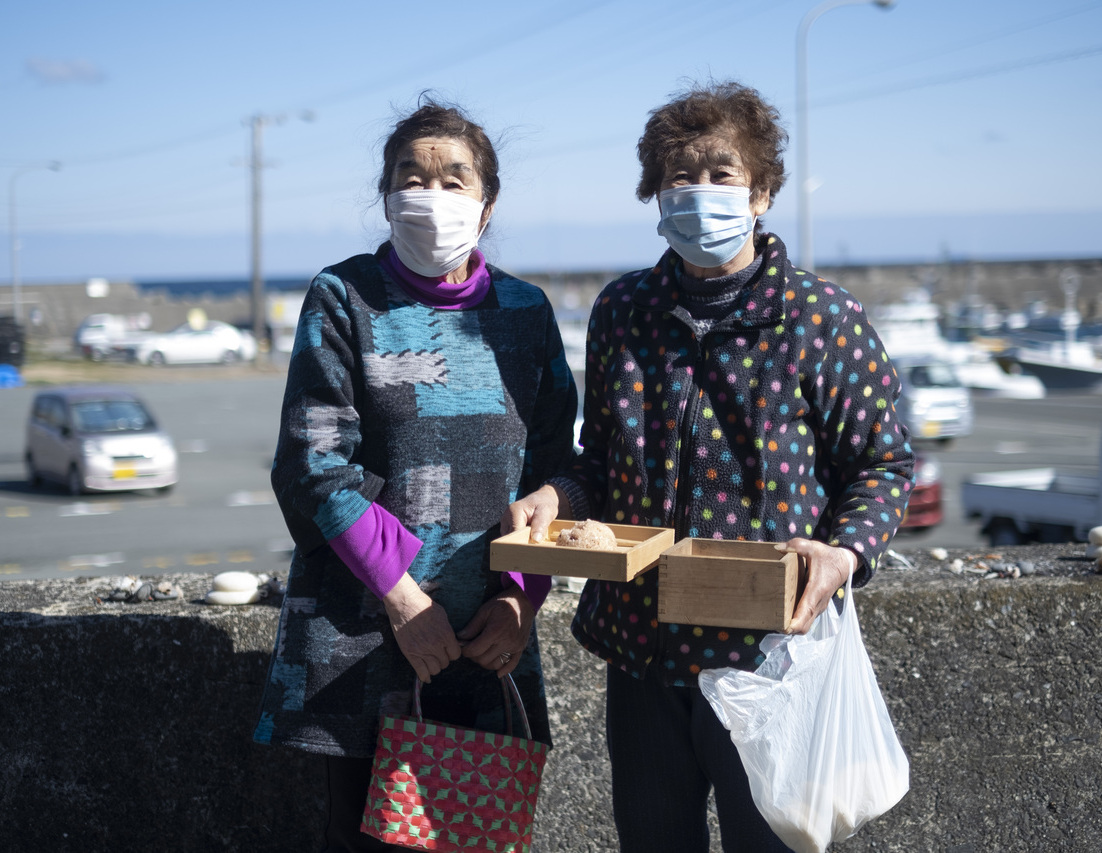Prayer of the Woman
Prayers of Women - Visiting Ama Divers in Ise-Shima
Ise-Shima is home to the largest number of ama divers in Japan and it is estimated that there are still some 750 Ama divers who continue to free-dive in search of seafood. Ama fishing has been designated as an important intangible folk cultural property in Japan. The daily life of ama divers is traditional, yet peaceful and flexible. Above all, it is full of cheerful smiles.
On February 16, 2023, just in time a Shinto ritual called “Kazukiori” was held to pray for a big catch and safety before ama fishing season opens, we visited Ijika fishing port, where about 50 ama divers are still active, boasting a large number even in Ise-Shima. While many ama divers here are aged in their 70s or older, women in their 30s and 40s who have moved here from the city are also active as ama divers. Aiko Ohno, an ama diver fishing at Ijika fishing port. She is highly regarded even by veteran divers who say, "Ai-chan catches the most”. She moved from Tokyo and is active as both a diver and photographer.
Aiko Ohno, an ama diver fishing at Ijika fishing port. She is highly regarded even by veteran divers who say, "Ai-chan catches the most”. She moved from Tokyo and is active as both a diver and photographer.
The beginning of "Kazukiori", a Shinto ritual of ama divers
Ama divers from all over Ijika will participate in the "Kazukiori". In the afternoon, ama divers come out of nowhere to the fishing port. The gathering time and starting time must be a matter of tacit understanding. Is there a clear rule or not? The ama divers gather together like a school of sardines, creating a free yet regular group movement.
Then, without a start signal, the Shinto ritual begins. Each ama diver carries a wooden box called "kaminozen (God’s meal)" containing offerings, such as round rice cakes, sake, red rice, raw rice, azuki beans, namasu or tazukuri, and stones picked up from the sea. In addition, the wooden box is tapped with Iso nomi, a chisel-like hand tool used to pry abalones off.
“Tap-tap”
When I asked ama divers, “Is there any rules on how to tap them?", they replied, "It depends on the person. The pleasant sound echoes out to the sea.
The ama divers make offerings and prayers in turn, from the banks along the old coastline to the hanging scroll of the eight dragon deities (Gods of water in Buddhism) of the Fisheries Cooperative Association, from the stone monuments in the town to the Six Jizo statues, and those with boats to their boats. Ama divers offer offerings and prayers on the old banks. The entire fishing port is filled with a bright and lively atmosphere with colorful dresses and cheerful laughter.
Ama divers offer offerings and prayers on the old banks. The entire fishing port is filled with a bright and lively atmosphere with colorful dresses and cheerful laughter.
Mysterious pattern "Seman" and "Doman".
When you look at ama divers, you will surprisingly notice that they have strange patterns painted around their bodies. They are the star mark "Seman" and the lattice pattern "Doman". The "Seman" is drawn with a single stroke that returns to its starting point with no beginning or end, ensuring that there is no room for evil spirits to enter. On the other hand, the lattice pattern "Doman" represents eyes keeping watch on evil spirits, making it difficult for them to enter.
In the old days, they were painted on the cheeks of ama divers before they dived into the sea with a dye extracted from shellfish pigment called shellfish purple. Today, however, they are painted in flexible forms with sign pens and cut-out stickers to watch over the ama divers. The "Seman" (star) and "Doman" (lattice) painted on a commuter bike.
The "Seman" (star) and "Doman" (lattice) painted on a commuter bike.
Enjoy the daily life of ama divers
The ama divers change rituals and prayer patterns flexibly to suit their lifestyles. They seem to be making the best choices to "keep going" naturally, without trying too much. Their behavior is full of empathy for working women.
Most ama divers are already in their 70s and 80s, having been in the field since they were 15 or 6 years old and have been engaged in it for more than half a century. Many of them have been fishing for abalone and Japanese spiny lobsters at sea and sent their children to receive higher education with the income from it. An ama diver recalled, "I would fish in the morning, come back and make breakfast, take the kids to school, fish in the afternoon, and then do the housework again”. The ama divers dive into the sea several times in a day. It is surprising that they were able to raise their children and take care of household chores in addition to the daily work. Ijika fishing port. Numerous boats line up.
Ijika fishing port. Numerous boats line up.
The ama divers earned an income from their self-developed fishing skills to support their families. In addition, they seemed to be enjoying their lives. Dressed in colorful clothing, the ama divers were discussing where to have the wrap-up party after the ritual. They talked about the pros and cons of the restaurants, saying things like, "The sashimi in this restaurant is great, but the sake is good in that one."
They support their families with a fulfilling job while enjoying fashion and fun.
Ama divers have led a vibrant life that modern women seek. Their laughter was filled with a certain "confidence”.


